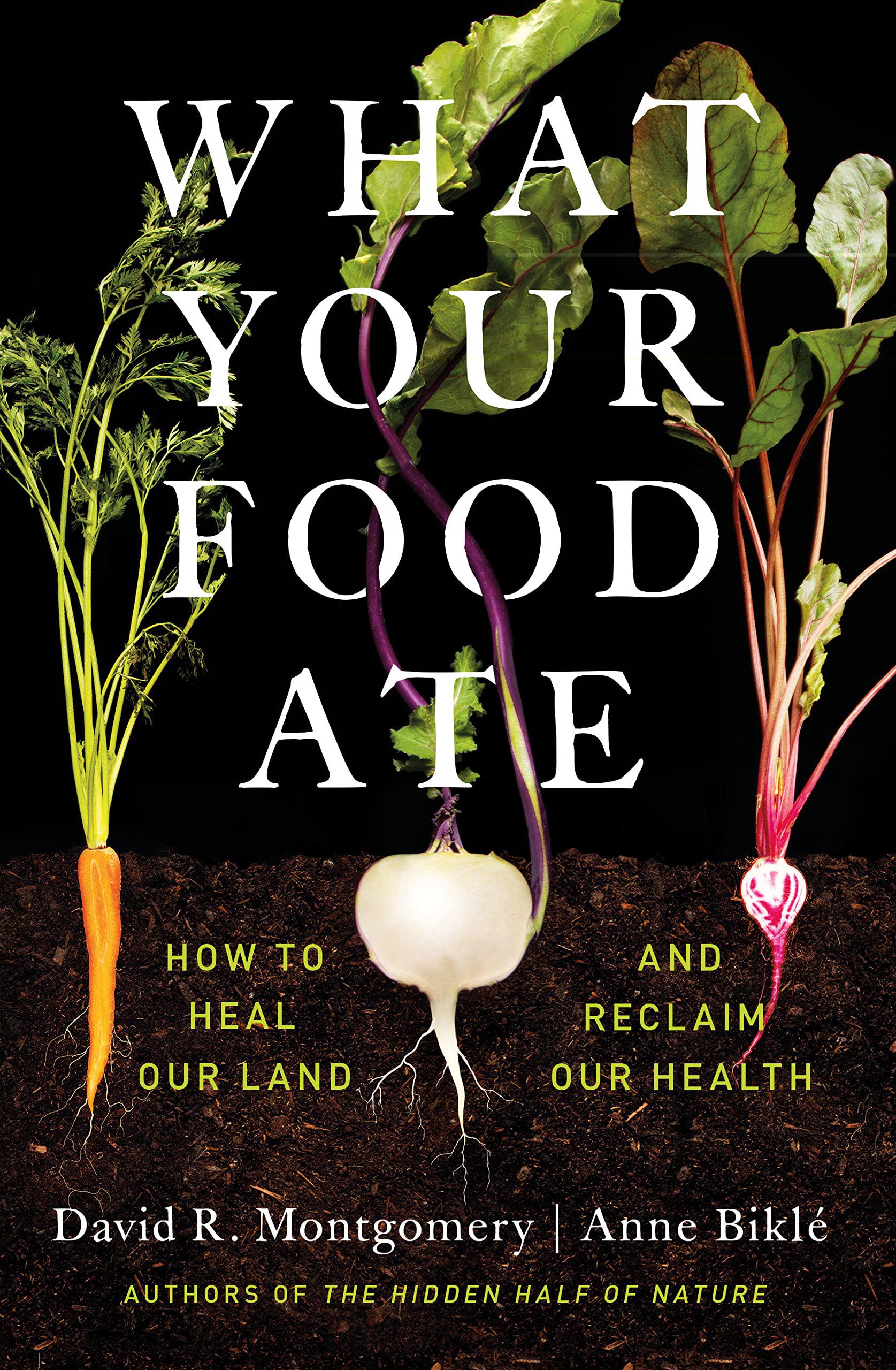
New Summer Reading: “What Your Food Ate— How to Heal Our Land and Reclaim Our Health”
by CRARS staff member Sheryl Karas. M.A.

Are you looking for a highly readable, fun, and extremely interesting introduction to regenerative agriculture? Do you care about your health and how farming practices might affect it? Then get yourself a copy of David R. Montgomery and Anne Biklé ‘s latest book What Your Food Ate— How to Heal Our Land and Reclaim Our Health (just published in June 2022 by W.W. Norton publishers).
It's unusual to read a book about soil health, regenerative agriculture, or human nutrition and gut microbiology that a person could call a “page-turner.” But this well-written book is so filled with surprising, easy to understand, and yet well-researched revelations that it is hard to put down. It starts with research showing that the food we eat today is demonstrably less nutritious than the same foods eaten by our grandparents. In fact, global deficiencies in nutrients essential for health like iron, zinc, magnesium and other minerals are more common than inadequate calories. People today are more likely to be getting enough to eat—in many cases too much food for good health—but can still be malnourished! We’re also suffering epidemic levels of chronic inflammation-related diseases like heart disease, cancer, high blood pressure and diabetes while autoimmune diseases that used to be rare are now commonplace.
Should we be alarmed? Yes! Do we know what is causing this or how to fix it? The authors think the problem is in how we farm and raise our food, and they present the science to prove it. Not only that, they present compelling evidence of the solutions, too, with case histories of farmers who are actually doing the work with great results. The key lies in taking care of the microbiology responsible for the health in our soil, something earlier proponents of chemical farming solutions knew nothing about. Long forgotten research from the early days of heavily tilled and fertilizer-dependent agriculture shows that soil health and nutrition problems appeared to be linked long ago but the science to prove why wasn’t there yet. The authors present multiple studies from those days and bring it right up to the present with the latest studies showing that soil microbiology is the key to healthy soil, healthy plants, and, ultimately, they think, to healthier people!
What is best about this book is that the authors are not naïve about market forces that make farmers balk at changing over to regenerative practices. Would that really be profitable? There is a good reason why modern practices were adopted—we needed to grow more food to feed more people at a lower price! Could we actually feed the planet in a profitable enough way by giving up practices modern farming is based on? The authors say yes, and, not only that, they present a significant body of research that shows that in today’s climate (economic and long-term weather changes), making the transition could be significantly more profitable than what conventional farming has long become. It could be a godsend to farmers facing out of control fertilizer prices while contending with degraded soil and changing conditions.
This book is hopeful and highly recommended. I think you’ll enjoy reading it, too.
